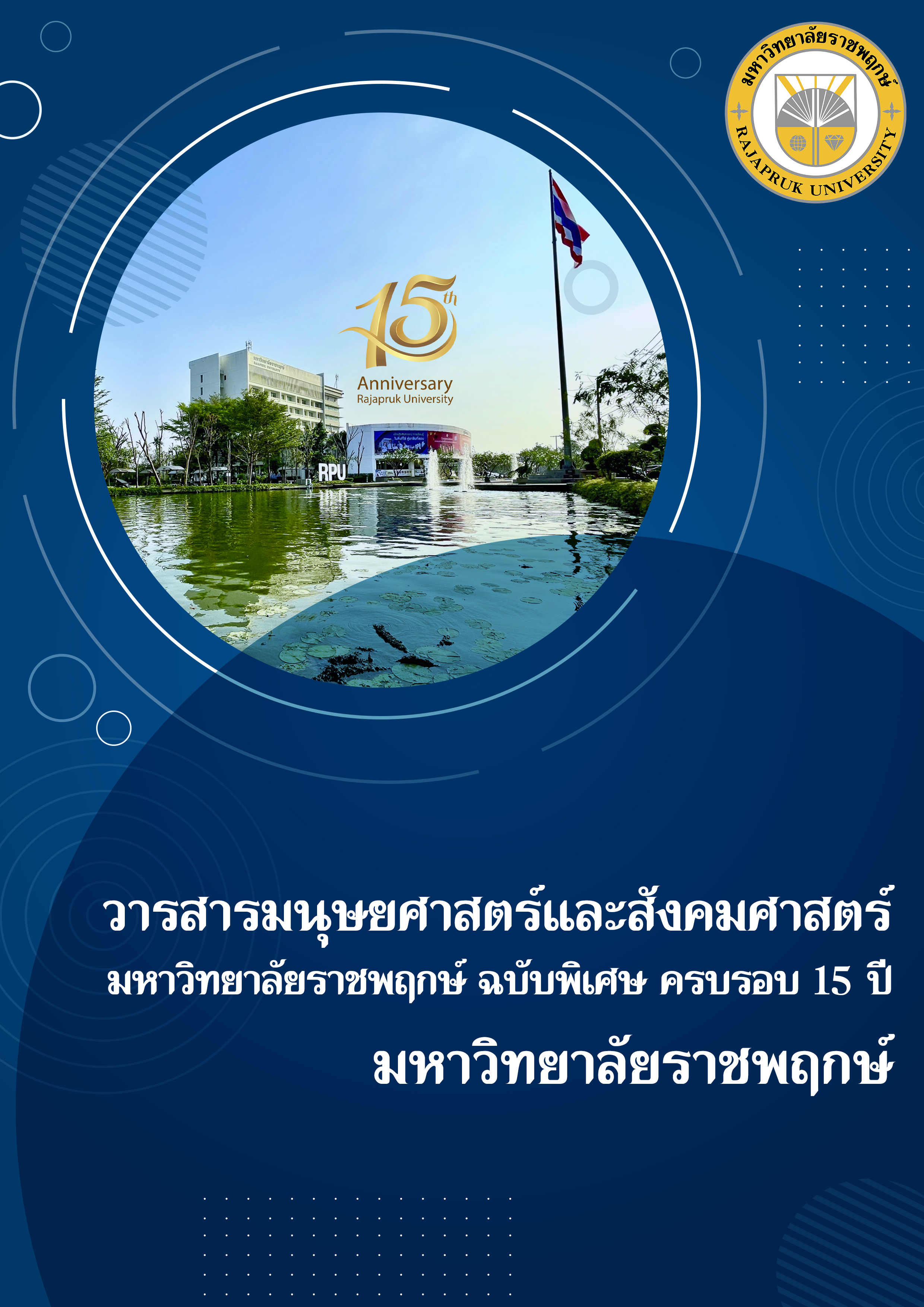The Development of a Framework of Activity-Based Costing in Secondary School Outputs: A Case Study of Debsirin School, Thailand
Main Article Content
Abstract
This study purposes were to 1) draft a framework, 2) evaluate a framework, 3) synthesize a framework of Activity-Based Costing in secondary school outputs: a case study of Debsirin School. This research methodology is documentary research. There are 12 documentary items used in this study; 6 literature reviews of Activity-Based Costing, and 6 reports of Debsirin School management. The instrument used in this study is a draft framework and an appropriate evaluation of framework of Activity-Based Costing in secondary school outputs: a case study of Debsirin School. This study reveals that a framework consisted of the 4 frameworks; the graduated students, activities, cost driver, and calculating Activity-Based Costing. There are 11 Debsirin’s outputs. From the lower secondary, it can be divided into 4 outputs by students’ programs; 1) The Regular Program 2) The Gifted Science and Mathematics Program 3) The English Program (EP) and 4) The Mini English Program (MEP) and from the upper secondary, it can be divided into 7 outputs from the programs of; 1) The Science and Mathematics 2) The Gifted Science and Mathematics 3) The Intensive English Program (IEP) 4) The Arts-Mathematics and English 5) The Arts-Chinese 6) The Foreign Languages and 7) The Arts-Physical Education. The graduated students’ activities can be divided into 3 groups; 1) the direct main activities 2) the indirect main activities and 3) the supporting activities. The cost driver is a factor that drives the resources to each activity. In this study there are 2 drivers for the amount of students and study hours. This costing output is calculated by expenses of each activity and then is divided by student proportion and activities of each output for figuring out each student’s costing. The result of appropriate evaluation is the high level (mean=1.00, SD=0.00). Eventually, the result will be administratively used in school management.
Article Details
References
บงกช อนังคพันธ์. (2552). การประยุกต์ใช้ต้นทุนฐานกิจกรรมในการคำนวณต้นทุนการผลิตนักศึกษา คณะวิทยาการจัดการ. วารสารมหาวิทยาลัยนราธิวาสราชนครินทร์ (Princess of Naradhiwas University Journal), 1(3): 33-47.
ปริณัฐ แซ่หวุ่น. (2548). การศึกษาระบบต้นทุนฐานกิจกรรมสำหรับการผลิตนักศึกษา กรณีศึกษา: คณะเทคโนโลยีอุตสาหกรรม มหาวิทยาลัยราชภัฏสวนสุนันทา. วิทยานิพนธ์ปริญญาวิศวกรรมศาสตรมหาบัณฑิต สาขาวิชาวิศวกรรมอุตสาหการ คณะวิศวกรรมศาสตร์ จุฬาลงกรณ์มหาวิทยาลัย.
ผกามาศ มูลวันดี. (2560). การศึกษาการใช้ระบบต้นทุนฐานกิจกรรมในการคำนวณต้นทุนการผลิตนักเรีนของวิทยาลัยการอาชีพในเขตภาคเหนือ. Academic Journal of Buriram Rajabhat University. 9(1): 137-155.
โรงเรียนเทพศิรินทร์. (2558). แผนปฏิบัติการประจำปี 2558. กรุงเทพฯ: ร้านถ่ายเอกสารหอพักนิสิตจุฬาลงกรณ์มหาวิทยาลัย.
โรงเรียนเทพศิรินทร์. (2559). รายงานประจำปี 2558. กรุงเทพฯ: ร้านถ่ายเอกสารหอพักนิสิตจุฬาลงกรณ์มหาวิทยาลัย.
โรงเรียนเทพศิรินทร์. (2559). แผนปฏิบัติการประจำปี 2559. กรุงเทพฯ: ร้านถ่ายเอกสารหอพักนิสิตจุฬาลงกรณ์มหาวิทยาลัย.
โรงเรียนเทพศิรินทร์. (2560). รายงานประจำปี 2559. กรุงเทพฯ: ร้านถ่ายเอกสารหอพักนิสิตจุฬาลงกรณ์มหาวิทยาลัย.
โรงเรียนเทพศิรินทร์. (2560). แผนปฏิบัติการประจำปี 2560. กรุงเทพฯ: ร้านถ่ายเอกสารหอพักนิสิตจุฬาลงกรณ์มหาวิทยาลัย.
โรงเรียนเทพศิรินทร์. (2561). รายงานประจำปี 2560. กรุงเทพฯ: ร้านถ่ายเอกสารหอพักนิสิตจุฬาลงกรณ์มหาวิทยาลัย.
สนธิญา สุวรรณราช. (2552). การประยุกต์ใช้ต้นทุนฐานกิจกรรมในสถานศึกษาเอกชน: กรณีศึกษาโรงเรียนลำปางพาณิชยการและเทคโนโลยี. สารนิพนธ์ปริญญาบัญชีมหาบัณฑิต บัณฑิตวิทยาลัย มหาวิทยาลัยเชียงใหม่.
สำนักงานคณะกรรมการการศึกษาขั้นพื้นฐาน. (2550). ประกาศสำนักงานคณะกรรมการการศึกษาขั้นพื้นฐาน เรื่อง การกระจายอำนาจการบริหารและการจัดการศึกษาของเลขาธิการคณะกรรมการการศึกษาขั้นพื้นฐานไปยังคณะกรรมการสำนักงานเขตพื้นที่ และสถานศึกษาในสังกัดสำนักงานคณะกรรมการการศึกษาขั้นพื้นฐาน พ.ศ.2550.
สำนักงานคณะกรรมการการศึกษาแห่งชาติ. (2545). พระราชบัญญัติการศึกษาแห่งชาติ พ.ศ.2542 และที่แก้ไขเพิ่มเติม (ฉบับที่ 2) พ.ศ.2545. กรุงเทพฯ: พริกหวานกราฟฟิค.
อานนท์ รักผล และคณะ. (2563). หลักธรรมาภิบาลสำหรับการบริหารงาน. Journal of Graduate Studies Review Mahachulalongkornrajavidyalaya University, Phrae Campus. 6(1): 233-245.
อุมาพร เกยเลื่อน. (2555). การศึกษาต้นแบบการคำนวณต้นทุนการศึกษาโดยใช้ต้นทุนฐานกิจกรรมในสถาบันอาชีวศึกษาเอกชน กรณีศึกษา โรงเรียนชุมแพบริหารธุรกิจเทคโนโลยี จังหวัดขอนแก่น. สารนิพนธ์ปริญญาบัญชีมหาบัณฑิต สาขาการบัญชี คณะการบัญชี มหาวิทยาลัยธุรกิจบัณฑิตย์.
Douglas T. Hicks. (1992). Activity-Based Costing for small and Mid-Sized Businesses. John Wiley & Sons, INC.
Fountaine, H. D. (2011). Activity-based costing in charter schools: facilitating systemic reform through better understanding of resource use. Doctoral dissertation, California State University, Northridge.
Peter B.B. Turney. (1993). Common Cents: The ABC Performance Breakthrough. Cost Technology. Portland, Oregon.


